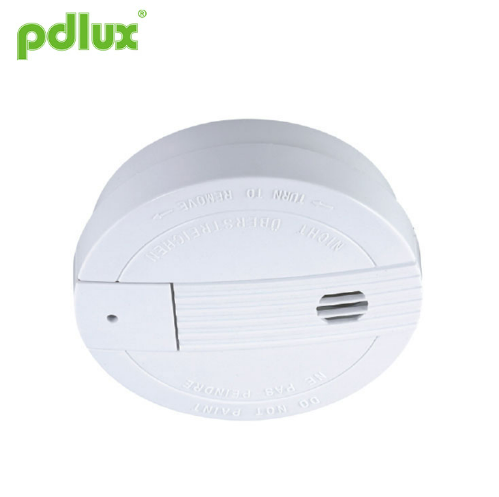Characteristics and Features of photoelectric smoke detector
2024-07-28
A photoelectric smoke detector is a type of smoke alarm that uses optical technology to detect smoke particles in the air. It is known for its sensitivity to smoldering fires, which produce larger smoke particles that can block light. Here are the key characteristics and features of a photoelectric smoke detector:
1. Detection Technology
- Photoelectric Sensor: Utilizes a light-sensing technology where a light source (usually an LED) and a light sensor (often a photodiode) are positioned in a sensing chamber. The light source emits a beam of light into the chamber.
- Smoke Detection: When smoke particles enter the chamber, they scatter the light beam, causing some of the light to reach the sensor. This change in light intensity triggers the alarm.
2. Sensitivity
- Smoldering Fires: Particularly effective at detecting smoldering fires that produce a lot of smoke but not necessarily a lot of flames. These fires often produce large, dense smoke particles that scatter the light beam in the chamber.
- False Alarms: Less prone to false alarms caused by cooking smoke or steam compared to ionization smoke detectors, which are more sensitive to small smoke particles.
3. Alarm Features
- Sound Alarm: Emits a loud audible alarm when smoke is detected, typically between 85 and 100 decibels. This sound alerts occupants to evacuate the area.
- Visual Indicators: May include visual indicators such as LED lights to signal the status of the detector (e.g., power, alarm condition).
4. Power Source
- Battery-Powered: Many photoelectric smoke detectors are powered by batteries, which need to be replaced periodically. Some models use long-life batteries that can last up to 10 years.
- Hardwired: Some detectors are hardwired into the building’s electrical system and may have a battery backup in case of a power outage.
5. Maintenance and Testing
- Regular Testing: Should be tested regularly to ensure proper operation. Most detectors have a test button that allows users to simulate smoke detection.
- Cleaning: Periodic cleaning of the detector is necessary to prevent dust and debris from affecting its performance. This can usually be done with a vacuum or soft brush.
6. Integration and Compatibility
- Interconnectivity: Many modern photoelectric smoke detectors can be interconnected with other alarms in the system. When one alarm detects smoke, all interconnected alarms will sound, providing comprehensive coverage throughout the building.
- Smart Features: Some models offer smart features such as connectivity with home automation systems, allowing users to receive notifications on their smartphones or control the detector remotely.
7. Installation
- Placement: Should be installed on the ceiling or high on the wall, as smoke rises. It’s important to follow the manufacturer’s guidelines for placement to avoid areas with poor air circulation, such as near vents or in corners.
- Distance from Sources: Should be installed away from kitchens and bathrooms to minimize false alarms caused by cooking smoke or steam.
8. Certifications and Standards
- Compliance: Must comply with safety standards and certifications, such as those from Underwriters Laboratories (UL) or similar organizations. These standards ensure the detector’s reliability and performance.
- Local Codes: Installation and maintenance should adhere to local building codes and regulations, which may specify requirements for smoke detectors in residential and commercial properties.
9. Battery Life and Replacement
- Battery Life: Battery-powered models typically have a battery life ranging from 1 to 10 years, depending on the type of battery used and the detector’s design.
- Battery Replacement: Batteries should be replaced according to the manufacturer's recommendations, or when the low battery warning chirps, indicating that the battery needs to be replaced.
Summary
A photoelectric smoke detector uses optical technology to detect smoke particles, making it highly effective at sensing smoldering fires. It features a light source and sensor that detect changes in light intensity caused by smoke particles. With its ability to minimize false alarms and effective detection of smoldering fires, it is a reliable choice for fire safety. The detector may be battery-powered or hardwired, and it should be installed and maintained according to manufacturer guidelines and local safety codes. Some models offer smart features and interconnectivity with other alarms for enhanced safety and convenience.



